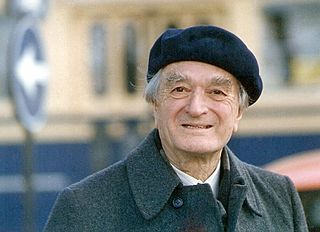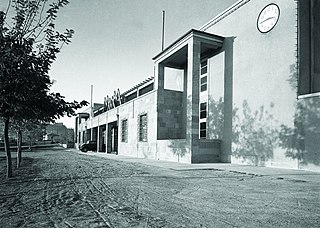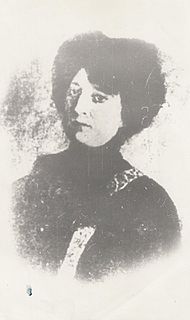
Ballet is a type of performance dance that originated during the Italian Renaissance in the fifteenth century and later developed into a concert dance form in France and Russia. It has since become a widespread and highly technical form of dance with its own vocabulary. Ballet has been influential globally and has defined the foundational techniques which are used in many other dance genres and cultures. Various schools around the world have incorporated their own cultures. As a result, ballet has evolved in distinct ways.
The music of Turkey includes mainly Turkic and Byzantine elements as well as partial influences ranging from Ottoman music, Middle Eastern music and Music of Southeastern Europe, as well as references to more modern European and American popular music. Turkey is a country on the northeastern shore of the Mediterranean Sea, and is a crossroad of cultures from across Europe, North Africa, the Middle East, the Caucasus and South and Central Asia.

Dame Ninette de Valois was an Irish-born British dancer, teacher, choreographer, and director of classical ballet. Most notably, she danced professionally with Serge Diaghilev's Ballets Russes, later establishing the Royal Ballet, one of the foremost ballet companies of the 20th century and one of the leading ballet companies in the world. She also established the Royal Ballet School and the touring company which became the Birmingham Royal Ballet. She is widely regarded as one of the most influential figures in the history of ballet and as the "godmother" of English and Irish ballet.

Selim III was the Sultan of the Ottoman Empire from 1789 to 1807. Regarded as an enlightened ruler, the Janissaries eventually deposed and imprisoned him, and placed his cousin Mustafa on the throne as Mustafa IV. Selim was subsequently killed by a group of assassins.

The Macedonian music refers to all forms of music associated with North Macedonia. It share similarities with the music of neighbouring Balkan countries, yet it remains overall distinctive in its rhythm and sound.
A ballet company is a type of dance troupe which performs classical ballet, neoclassical ballet, and/or contemporary ballet in the European tradition, plus managerial and support staff. Most major ballet companies employ dancers on a year-round basis, except in the United States, where contracts for part of the year are the norm. A company generally has a home theatre where it stages the majority of its performances, but many companies also tour in their home country or internationally.

Ahmet Adnan Saygun was a Turkish composer, musicologist and writer on music.

The köçek was typically a very handsome young male slave rakkas, or dancer, who usually cross-dressed in feminine attire, and was employed as an entertainer.

Turkish folk music is the traditional music of Turkish people living in Turkey influenced by the cultures of Anatolia and former territories in Europe and Asia. Its unique structure includes regional differences under one umbrella. It includes popular music from the Ottoman Empire era. After the foundation of the Turkish Republic in 1923, Turkish President Mustafa Kemal Atatürk ordered a wide-scale classification and archiving of samples of Turkish folk music from around the country, which, from 1924 to 1953 collected around 10,000 folk songs. Traditional folk music was combined with Western harmony and musical notation to create a more modern style of popular Turkish music.

Ottoman military bands are the oldest recorded military marching band in the world. Though they are often known by the word Mehter in West Europe, that word, properly speaking, refers only to a single musician in the band. In Ottoman, the band was generally known as mehterân, though those bands used in the retinue of a vizier or prince were generally known as mehterhane, the band as a whole is often termed mehter bölüğü, mehter takımı. In West Europe, the band's music is also often called Janissary music because the janissaries formed the core of the bands.
The Istanbul International Music Festival, formerly Istanbul Festival, is a cultural event held every June and July in Istanbul, Turkey. It offers a selection of European classical music, ballet, opera and traditional music performances with the participations of famous artists from all over the world. The festival was first held in 1973 and is organized by the Istanbul Foundation of Culture and Arts. In 2006, Borusan Holding took over its main sponsorship from Eczacıbaşı Holding.

The Hacettepe University Ankara State Conservatory, the first conservatory to be founded in the Republic of Turkey, was established in 1936 by a directive of Mustafa Kemal Atatürk.

The State Opera and Ballet is the national directorate of opera and ballet companies of Turkey, with venues in Ankara, İstanbul, İzmir, Mersin, Antalya and Samsun. The directorate is bound to the Ministry of Culture and Tourism. As of January 2018, Murat Karahan is the General Director.

The Fire of Anatolia or Anadolu Ateşi is a Turkish dance group consisting of 120 dancers, several choreographers and other technical staff. The group has performed in more than 85 countries from the United States to China and Japan, in front of an audience of approximately 20 million people altogether. Fire of Anatolia holds two Guinness records, one for fastest dance performance with 241 steps per minute and another for largest audience, 400,000 people in Ereğli, in the Black Sea Region of the country. On 9 February 2013, Fire of Anatolia performed at the CCTV New Year's Gala. The head of the group is Mustafa Erdoğan.
Mazlum Çimen is a Turkish musician, ballet dancer, film actor, folk singer, and award-winning film score composer.

Maria I. Perini was an Italian ballet teacher. In 1916, she opened the first private ballet studio in the Tbilisi State Academy of Arts and went on to teach many of the famous Georgian dancers including Dimitri and Irina Aleksidze, Maria Bauer, Soliko Virsaladze, Nino Ramishvili, Iliko Sukhishvili, Vakhtang Chabukiani, Elene Chikvaidze, Maria Kazinets, and Elene Gvaramadze. Her methods of teaching classical dance laid solid foundations for developing Georgian ballet. She was married to the Polish-Georgian artist Henryk Hryniewski.
Barış Dilaver is a Turkish ballet dancer.

Afife Jale was a Turkish stage actress, best known as the first Muslim theatre actress in Turkey.
Alfred Rodrigues was a South African ballet dancer and choreographer. His works have been produced by ballet and opera companies in many countries of the world.
Fidan Hajiaga qizi Hajiyeva/Naylor, Azerbaijan opera singer, People's Artist of the Republic of Azerbaijan, mezzo-soprano, Soloist of the Azerbaijan National Academic Opera and Ballet Theatre.












